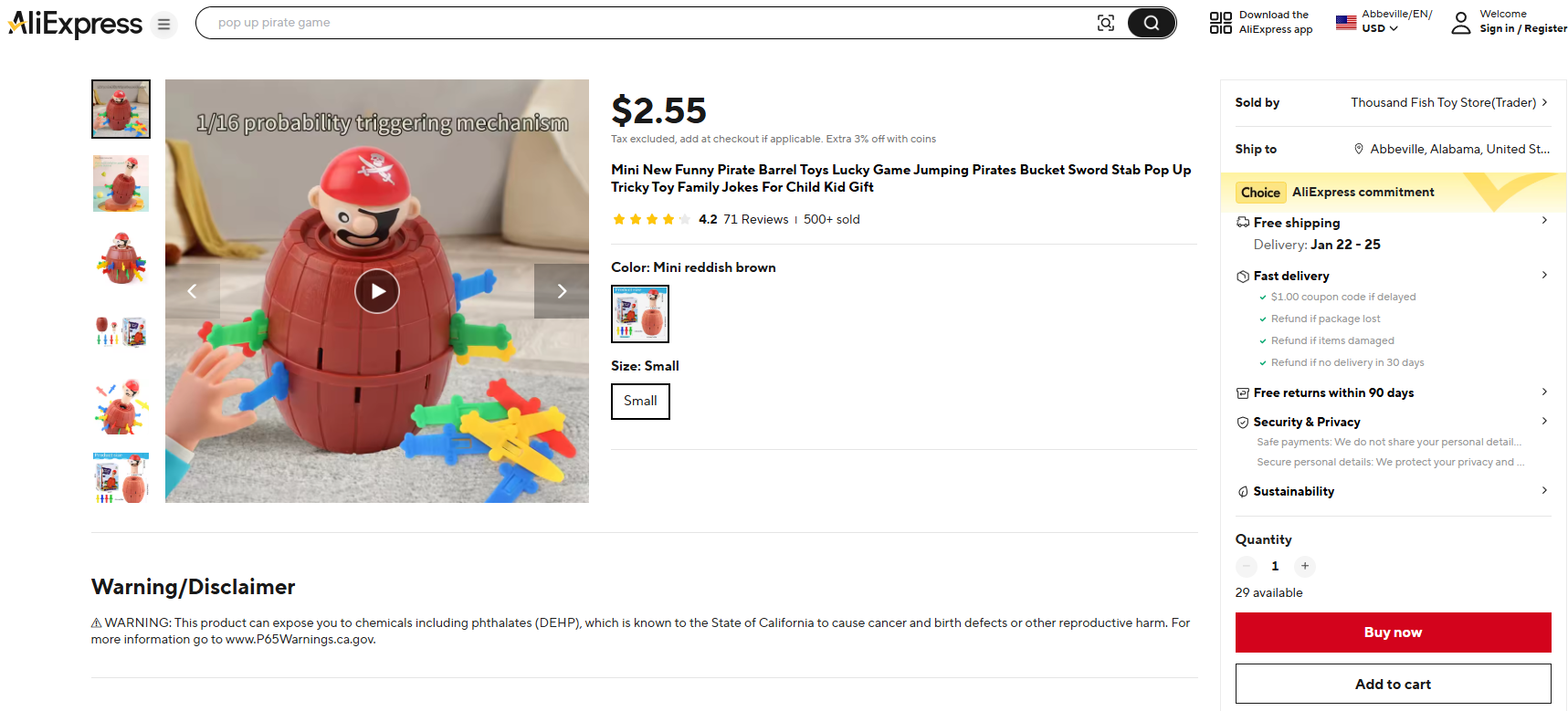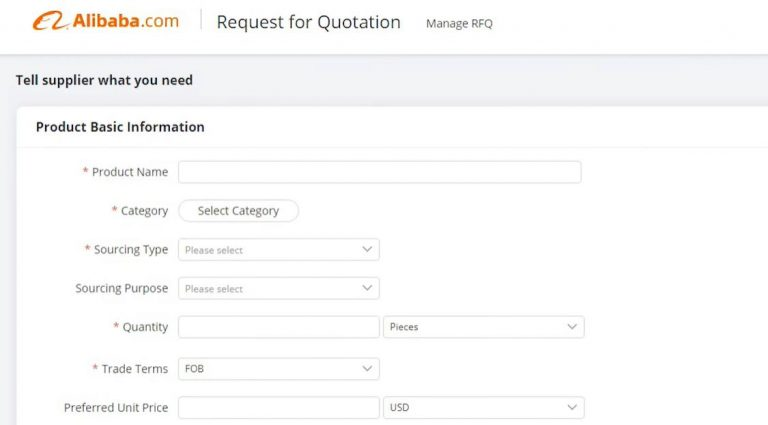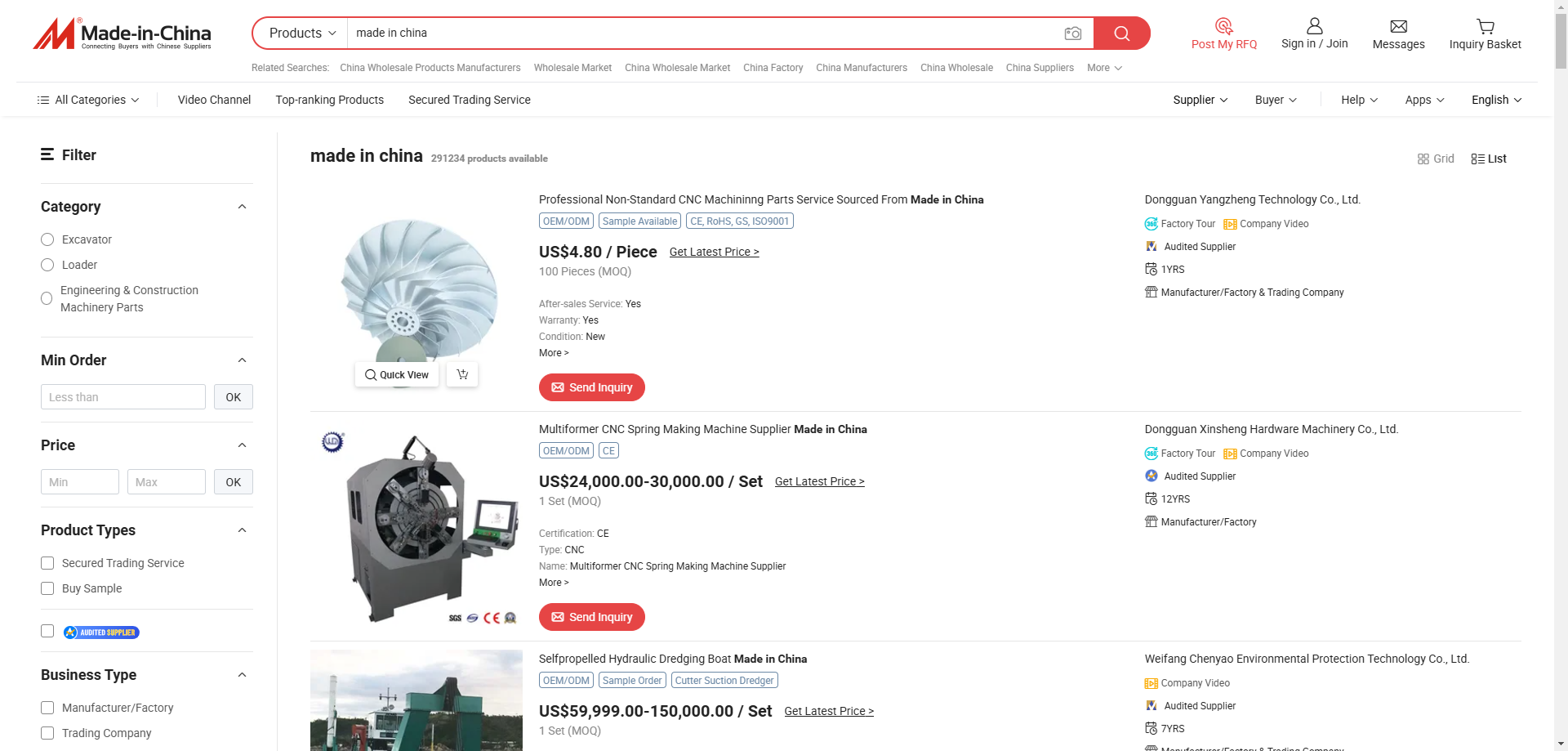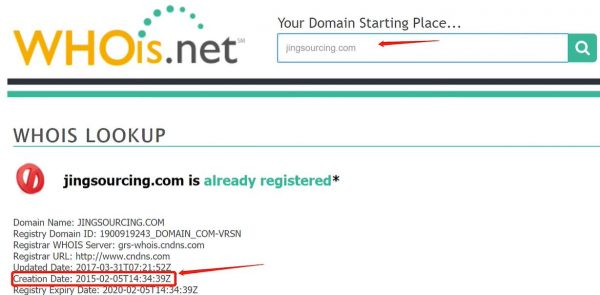How to find Chinese suppliers online?
After completing product research, identifying products to sell is a critical step. Next, it is crucial to find a reliable supplier in China, which has the advantage of producing quality products at low cost. The growth of the Internet has made it easy to find the right supplier without having to travel to China. In this article, we will introduce four ways to find Chinese suppliers online, which are suitable for businesses of all sizes.
Method 1: Find suppliers from Aliexpress and DHgate
Introduction to Aliexpress and DHgate
Aliexpress and DHgate are ideal for small businesses or buyers of small quantities of products. Both platforms are designed for small volume buyers and are easy to use, similar to online shopping.

-
Aliexpress: suitable for small orders under $100, even for single product purchases. It is part of the Alibaba Group, with links to Taobao and a wide range of products. When purchasing, you just need to check the supplier’s sales history and reviews, select the quantity and shipping option, the international shipping fee is automatically calculated, and the products are shipped via China Post airmail or FedEx, DHL and other express companies. If you are not satisfied with the quality of the product, the refund process is convenient.
-
DHgate: More suitable for orders from 100 to 1000 USD. Many suppliers will set different price levels according to the quantity purchased. DHgate is a good choice for small business owners and retailers who find Alibaba’s suppliers too high and Aliexpress’ wholesale prices too expensive.
Example Comparison
Taking the resistance band set as an example, a set on Aliexpress costs about $8 and arrives in the U.S. in 30 days, while the same product on DHgate costs only $4.50 to $5 including shipping, and the supplier can ship the product by DHL to the U.S. in 7 days for purchases of 100 sets or more. However, Aliexpress has more suppliers and product categories because it is backed by Alibaba Group, while DHgate is an independent company with relatively limited product categories.
Limitations
Sellers on both platforms are mostly wholesalers, not manufacturers, and the products come from a variety of sources, so the quality of products may not be consistent from batch to batch. If you plan to purchase the same product in large quantities over a long period of time, these two platforms are not the best choice.
Method 2: Find suppliers through Alibaba or other B2B trading platforms
Scenarios
B2B trading platforms such as Alibaba are ideal if you have a large budget and are ready to develop your business quickly and in the long term. Reliable manufacturers or trading companies can be found as suppliers.
Trading through Alibaba
- Types of suppliers: There are mainly manufacturers and trading companies. Manufacturers produce and sell directly, while trading companies purchase from partner manufacturers for resale. Trading companies have obvious price advantages and more professional and efficient services because they choose to cooperate with manufacturers with competitive prices.
- How to find: You can contact suppliers directly by searching for product keywords, or submit a purchase inquiry through RFQ, so that matching suppliers can contact you.

- Transaction: Payment can be made by wire transfer, or you can use Alibaba Trade Assurance to protect the security of the transaction, and if you do not receive the qualified products on time, you can get a refund.
Through other B2B trading platforms
- Made-in-China: has obvious advantages in machinery products, as it lost to Alibaba in the past 10 years, focusing on machinery industry, it can find more machinery suppliers.

- Global Sources: Suitable for gifts and electronics, easy to find large, established manufacturers, fewer small trading companies or manufacturers on the platform due to high membership fees (about $30,000 per year from suppliers).
Method 3: Use Google search to find suppliers
Alibaba supplier aggregation reasons to explore
There are two main reasons why Alibaba attracts so many suppliers:
- Having a large number of potential buyers
Alibaba’s fame makes it the platform of choice when people are looking for suppliers. After 20 years of development, Alibaba has invested a lot of time and money to build its brand and accumulate a huge user base. Alibaba is the first place that comes to mind when people want to buy, bringing a constant flow of potential buyers.
- Google traffic support
In addition to its own brand effect, Alibaba also gets a lot of traffic from Google. Whether through natural search or paid advertising, Google’s search results can accurately direct potential buyers to Alibaba’s platform. Alibaba resells this buyer traffic to suppliers by charging them an annual membership fee of $4,000 to $10,000. At the same time, suppliers on the platform compete with each other for more exposure through PPC (pay-per-click) advertising. This model allows Alibaba to continue to profit from buyer traffic.
Reasons why suppliers are turning to Google Search
With the increasing number of suppliers on Alibaba, the competition is getting fiercer and fiercer. Suppliers need to pay higher and higher costs in order to get qualified buyer inquiries. In this case, some suppliers begin to realize that instead of spending a lot of money on Alibaba to compete for limited traffic, they can build their own company website and attract potential customers at a lower cost through Google Ads or Google SEO.
Advantages of Google Search
- Low-cost customer exposure: With Google Ads, suppliers can pinpoint potential customers and get a lot of exposure at a relatively low advertising cost. Google SEO, on the other hand, optimizes the content and structure of the website to improve the ranking in Google search results, thus attracting more natural traffic, which can bring sustained customer attention in the long run and at a lower cost.
- Reduce competitive pressure: On Alibaba, suppliers need to compete with many peers for limited buyer resources, which is very competitive. In Google search, suppliers can focus more on their target customer groups, the competition is relatively small, and it is easier to establish direct contact with customers.
Steps
- Search keywords: Search for product keywords in Google, combined with recommended keywords, check the Top100 search results, and select Chinese manufacturers or trading company websites.
- Contact & Evaluation: Inquire via email or website, usually 1-2 business days for a response. To assess the reliability of the supplier, you can ask whether there is an Alibaba store, use Trade Assurance or PayPal transactions; use Whois to check the domain name registration time, the longer the more reliable; check the website to show the company’s address, office photos, exhibition information.

Advantages and limitations
Compared to Alibaba, Google Search can find more specialized manufacturers, especially for buyers who do not have specific product needs and want to develop new products. However, you need to evaluate the reliability of suppliers by yourself, and there is no third-party guarantee.
Method 4: Find suppliers from LinkedIn or Facebook

The urgent need of Chinese suppliers
Chinese suppliers have a strong need for foreign buyers as it brings them a wider market and more business opportunities. For many Chinese suppliers, Alibaba and Canton Fair are the main ways to connect with foreign buyers. However, as competition intensifies, some suppliers are looking for other ways to expand their customer base to get out of the competitive environment.
Advantages of LinkedIn and Facebook
LinkedIn and Facebook have become important platforms for Chinese suppliers to find customers for two main reasons:
- Free to use
Both platforms are free, and suppliers can easily sign up for an account without paying any fees. This reduces their marketing costs and allows them to reach a wider range of potential customers.
- Pinpoint potential buyers
Suppliers can pinpoint potential buyers by searching for keywords related to their products or industries. For example, they can search for keywords such as “perfume bottle sourcing” or “cosmetic packaging needs” to find buyers who may need related products. In addition, LinkedIn and Facebook algorithms also recommend products or services that may be of interest to users based on their industry, job title and other information, further improving the match between suppliers and potential buyers.
Steps to find suppliers on LinkedIn or Facebook
- Create and refine a personal or company account: Create a personal or company account on LinkedIn or Facebook and refine the account information, including a headshot, background image, profile or company description. Make sure the account looks professional and credible to attract suppliers’ attention.
- Search keywords: Enter keywords related to your products in the search bar, such as “perfume bottle manufacturer”, “cosmetic packaging supplier”, etc. Combined with business-related keywords, such as “OEM”, “customized packaging”, etc., you can more accurately find relevant suppliers.
- Browse and filter information: View the information released by suppliers in the search results, such as product information, manufacturer photos, company news, etc.. Filter out those suppliers who look professional and competent, and focus on whether their product categories, quality, production capacity, etc. meet your needs.
- Take the initiative to contact vendors: Take the initiative to contact vendors by sending friend requests or private messages to express your purchasing intentions. You can ask them if they can provide the products you need, as well as information about the price, quality, and delivery time of the products. Also, you can ask them to send catalogs or samples so that you can have a more comprehensive understanding of their products.
Cautions and Limitations
- Limited number of suppliers: The number of suppliers found on LinkedIn or Facebook is relatively small compared to Alibaba or Google search. This may be due to the fact that many suppliers are not fully utilizing these two platforms or their marketing strategies are not sophisticated enough, resulting in low exposure.
- Difficulty in understanding supplier background: It’s difficult to get a full picture of a supplier’s company background or product line just by looking at a salesperson’s Facebook page or LinkedIn page. The information presented on the page may not be detailed enough or there is a risk of false information. Therefore, after the initial contact, further communication and investigation are needed to gain a deeper understanding of the supplier’s strengths and credibility.
- Communication efficiency may be low: Communicating with suppliers on LinkedIn or Facebook may be affected by factors such as platform functionality limitations and time differences, making communication relatively inefficient. Sometimes, suppliers may not respond to messages in a timely manner, or their responses may not be detailed enough, requiring multiple communications to obtain complete information.